






























See Also
See Again
© Getty Images
0 / 31 Fotos
Chembra Lake - Kerala
- En route to the tip of Chembra Peak in Kerala, you'll find Chembra Lake, a heart-shaped lake believed never to have dried up.
© Shutterstock
1 / 31 Fotos
Magnetic Hill - Ladakh
- Magnetic Hill, located in the Leh district of Ladakh, appears to have magnetic properties that pull vehicles uphill. It is, however, the result of an optical illusion created by the surrounding landscape.
© Shutterstock
2 / 31 Fotos
Krishna's Butterball - Tamil Nadu
- Krishna's Butterball or Vaan Irai Kal is a large granite boulder balancing on a short incline in Mamallapuram. It is said to have been in the same place for 1,200 years.
© Shutterstock
3 / 31 Fotos
Nohkalikai Falls - Meghalaya
- Nohkalikai Falls, in the state of Meghalaya, is the tallest plunge waterfall in India, with a height of 1,115 feet (340 meters). The water in the plunge pool is a distinctive shade of blue-green.
© Shutterstock
4 / 31 Fotos
Barren Island, Andaman Islands
- Barren Island is located in the Andaman Sea and is the only active volcano in the Indian subcontinent. The most recent eruption began in September 2018 and ended in January 2022.
© Shutterstock
5 / 31 Fotos
Agumbe - Karnataka
- Agumbe is a small village known for its heavy rainfall and lush rainforests. Hiking trails weave past towering mountains and tumbling waterfalls.
© Shutterstock
6 / 31 Fotos
Roopkund Lake - Uttarakhand
- Roopkund Lake is located 16,500 feet (5,029 meters) above sea level at the foot of Trisul, one of India's highest mountains. To date, skeletal remains of up to 800 people have been found here, but the reasons remain unclear.
© Shutterstock
7 / 31 Fotos
Keoladeo National Park - Rajasthan
- Keoladeo National Park is a UNESCO World Heritage Site renowned for its abundance of native, resident, and migratory birds.
© Shutterstock
8 / 31 Fotos
Spiti Valley - Himachal Pradesh
- Spiti Valley sits at an altitude of 14,000 feet (4,270 meters) above sea level. It is one of the highest inhabited places in the world and is famous for its natural beauty and 1,000-year-old Tabo Monastery.
© Shutterstock
9 / 31 Fotos
Bhedaghat Marble Rocks - Madhya Pradesh
- The Bhedaghat Marble Rocks, situated on the banks of the Narmada River, are known for their striking marble cliff faces and magnificent waterfalls.
© Shutterstock
10 / 31 Fotos
Kanha National Park - Madhya Pradesh
- Kanha National Park is home to a large population of the Royal Bengal tiger, Indian leopards, sloth bears, and Indian wild dogs. The forest inspired Rudyard Kipling’s 'The Jungle Book.'
© Shutterstock
11 / 31 Fotos
Dudhsagar falls - Goa
- Dudhsagar Falls in Goa is a four-tiered waterfall on the Mandovi River. It is the fifth-tallest waterfall in India, with a height of 1,968 feet (600 meters).
© Shutterstock
12 / 31 Fotos
Great Himalayan National Park - Himachal Pradesh
- The Great Himalayan National Park is a UNESCO World Heritage Site characterized by high alpine peaks with diverse ecosystems.
© Shutterstock
13 / 31 Fotos
Zanskar Valley - Ladakh
- Zanskar Valley is known for its rugged landscapes and is popular for adventure sports like trekking, paragliding, and water rafting.
© Shutterstock
14 / 31 Fotos
Mawsmai Cave - Meghalaya
- Mawsmai Cave is a 492-foot (150-meter)-long limestone cavern with low passages and accessible caves. It is popular with domestic tourists.
© Shutterstock
15 / 31 Fotos
Majuli - Assam
- Majuli is the world's largest river island on the Brahmaputra River. The island is inhabited by members of the Mising, Deori, and Sonowal Kachari tribes.
© Shutterstock
16 / 31 Fotos
Silent Valley National Park - Kerala
- Believed to be the sole bit of evergreen forest in the Sahya Ranges, Silent Valley National Park is home to lush greenery, winding rivers, and undulating hills.
© Shutterstock
17 / 31 Fotos
Thar Desert - Rajasthan
- The Thar Desert, also known as the Great Indian Desert, boasts rolling sand dunes perfect for camel safaris.
© Shutterstock
18 / 31 Fotos
Pangong Lake - Ladakh
- Situated at a height of approximately 14,271 feet (4,350 meters), Pangong Lake is the world's highest saltwater lake. It is known to change colors, appearing blue, green, and red at different times.
© Shutterstock
19 / 31 Fotos
Andaman and Nicobar Islands
- The Andaman and Nicobar Islands boast pristine beaches, tropical rainforests, and coral reefs. Tourists can visit 29 inhabited and 11 uninhabited islands without permits.
© Shutterstock
20 / 31 Fotos
Living root bridges - Meghalaya
- Villagers from the Meghalaya region needed a way to cross swollen rivers and devised a clever solution: weaving tree roots into sturdy, living bridges.
© Shutterstock
21 / 31 Fotos
Borra Caves - Andhra Pradesh
- The Borra Caves in Andhra Pradesh are one of the largest cave systems in the country. They are over 150 million years old and home to stalactite and stalagmite formations.
© Shutterstock
22 / 31 Fotos
Chitrakote waterfall - Chhattisgarh
- The Chitrakote waterfall, known as the "Niagara Falls of India", is the widest waterfall in India. It is particularly striking at sunset.
© Shutterstock
23 / 31 Fotos
Loktak Lake - Manipur
- Loktak Lake, the largest freshwater lake in northeast India, is home to unique floating islands called phumdi. The majority of the mass of phumdi lies below the water's surface, like an iceberg.
© Shutterstock
24 / 31 Fotos
Rann of Kutch - Gujarat
- The Rann of Kutch is an area of salt marshes situated on the border of India and Pakistan. It covers an area of about 7,000 square miles (18,000 square kilometers).
© Shutterstock
25 / 31 Fotos
Western Ghats - Maharashtra/Kerala/Karnataka
- The Western Ghats is a mountain range that runs along the western coast of the Indian peninsula. The area possesses unique biophysical and ecological processes and is one of the world’s eight "hottest hotspots" of biological diversity.
© Shutterstock
26 / 31 Fotos
Sundarbans - West Bengal
- The Sundarban National Park is a delta covered by mangrove forests. It is one of the largest reserves for the Bengal tiger and is famous for its bird sanctuary.
© Shutterstock
27 / 31 Fotos
Chilika Lake - Odisha
- Chilika Lake holds the title of Asia's largest brackish water lagoon. It is also the second-largest coastal lagoon in the world. Chilika Lake is a firm favorite among nature lovers and bird watchers.
© Shutterstock
28 / 31 Fotos
Valley of Flowers - Uttarakhand
- The Valley of Flowers is a UNESCO World Heritage Site famous for its meadows of alpine flowers. Hiking trails are easy to moderate and provide access to the Uttarakhand Himalayas.
© Shutterstock
29 / 31 Fotos
Lonar Lake - Maharashtra
- Lonar is a 50,000-year-old lake that formed after a meteorite hit the earth. In 2020, the waters turned pink. The color change was attributed to a number of factors, from increased salinity to salt-loving bacteria.Sources: (Travel Triangle) (Fab Hotels) See also: Exploring 30 magnificent natural wonders
© Shutterstock
30 / 31 Fotos
© Getty Images
0 / 31 Fotos
Chembra Lake - Kerala
- En route to the tip of Chembra Peak in Kerala, you'll find Chembra Lake, a heart-shaped lake believed never to have dried up.
© Shutterstock
1 / 31 Fotos
Magnetic Hill - Ladakh
- Magnetic Hill, located in the Leh district of Ladakh, appears to have magnetic properties that pull vehicles uphill. It is, however, the result of an optical illusion created by the surrounding landscape.
© Shutterstock
2 / 31 Fotos
Krishna's Butterball - Tamil Nadu
- Krishna's Butterball or Vaan Irai Kal is a large granite boulder balancing on a short incline in Mamallapuram. It is said to have been in the same place for 1,200 years.
© Shutterstock
3 / 31 Fotos
Nohkalikai Falls - Meghalaya
- Nohkalikai Falls, in the state of Meghalaya, is the tallest plunge waterfall in India, with a height of 1,115 feet (340 meters). The water in the plunge pool is a distinctive shade of blue-green.
© Shutterstock
4 / 31 Fotos
Barren Island, Andaman Islands
- Barren Island is located in the Andaman Sea and is the only active volcano in the Indian subcontinent. The most recent eruption began in September 2018 and ended in January 2022.
© Shutterstock
5 / 31 Fotos
Agumbe - Karnataka
- Agumbe is a small village known for its heavy rainfall and lush rainforests. Hiking trails weave past towering mountains and tumbling waterfalls.
© Shutterstock
6 / 31 Fotos
Roopkund Lake - Uttarakhand
- Roopkund Lake is located 16,500 feet (5,029 meters) above sea level at the foot of Trisul, one of India's highest mountains. To date, skeletal remains of up to 800 people have been found here, but the reasons remain unclear.
© Shutterstock
7 / 31 Fotos
Keoladeo National Park - Rajasthan
- Keoladeo National Park is a UNESCO World Heritage Site renowned for its abundance of native, resident, and migratory birds.
© Shutterstock
8 / 31 Fotos
Spiti Valley - Himachal Pradesh
- Spiti Valley sits at an altitude of 14,000 feet (4,270 meters) above sea level. It is one of the highest inhabited places in the world and is famous for its natural beauty and 1,000-year-old Tabo Monastery.
© Shutterstock
9 / 31 Fotos
Bhedaghat Marble Rocks - Madhya Pradesh
- The Bhedaghat Marble Rocks, situated on the banks of the Narmada River, are known for their striking marble cliff faces and magnificent waterfalls.
© Shutterstock
10 / 31 Fotos
Kanha National Park - Madhya Pradesh
- Kanha National Park is home to a large population of the Royal Bengal tiger, Indian leopards, sloth bears, and Indian wild dogs. The forest inspired Rudyard Kipling’s 'The Jungle Book.'
© Shutterstock
11 / 31 Fotos
Dudhsagar falls - Goa
- Dudhsagar Falls in Goa is a four-tiered waterfall on the Mandovi River. It is the fifth-tallest waterfall in India, with a height of 1,968 feet (600 meters).
© Shutterstock
12 / 31 Fotos
Great Himalayan National Park - Himachal Pradesh
- The Great Himalayan National Park is a UNESCO World Heritage Site characterized by high alpine peaks with diverse ecosystems.
© Shutterstock
13 / 31 Fotos
Zanskar Valley - Ladakh
- Zanskar Valley is known for its rugged landscapes and is popular for adventure sports like trekking, paragliding, and water rafting.
© Shutterstock
14 / 31 Fotos
Mawsmai Cave - Meghalaya
- Mawsmai Cave is a 492-foot (150-meter)-long limestone cavern with low passages and accessible caves. It is popular with domestic tourists.
© Shutterstock
15 / 31 Fotos
Majuli - Assam
- Majuli is the world's largest river island on the Brahmaputra River. The island is inhabited by members of the Mising, Deori, and Sonowal Kachari tribes.
© Shutterstock
16 / 31 Fotos
Silent Valley National Park - Kerala
- Believed to be the sole bit of evergreen forest in the Sahya Ranges, Silent Valley National Park is home to lush greenery, winding rivers, and undulating hills.
© Shutterstock
17 / 31 Fotos
Thar Desert - Rajasthan
- The Thar Desert, also known as the Great Indian Desert, boasts rolling sand dunes perfect for camel safaris.
© Shutterstock
18 / 31 Fotos
Pangong Lake - Ladakh
- Situated at a height of approximately 14,271 feet (4,350 meters), Pangong Lake is the world's highest saltwater lake. It is known to change colors, appearing blue, green, and red at different times.
© Shutterstock
19 / 31 Fotos
Andaman and Nicobar Islands
- The Andaman and Nicobar Islands boast pristine beaches, tropical rainforests, and coral reefs. Tourists can visit 29 inhabited and 11 uninhabited islands without permits.
© Shutterstock
20 / 31 Fotos
Living root bridges - Meghalaya
- Villagers from the Meghalaya region needed a way to cross swollen rivers and devised a clever solution: weaving tree roots into sturdy, living bridges.
© Shutterstock
21 / 31 Fotos
Borra Caves - Andhra Pradesh
- The Borra Caves in Andhra Pradesh are one of the largest cave systems in the country. They are over 150 million years old and home to stalactite and stalagmite formations.
© Shutterstock
22 / 31 Fotos
Chitrakote waterfall - Chhattisgarh
- The Chitrakote waterfall, known as the "Niagara Falls of India", is the widest waterfall in India. It is particularly striking at sunset.
© Shutterstock
23 / 31 Fotos
Loktak Lake - Manipur
- Loktak Lake, the largest freshwater lake in northeast India, is home to unique floating islands called phumdi. The majority of the mass of phumdi lies below the water's surface, like an iceberg.
© Shutterstock
24 / 31 Fotos
Rann of Kutch - Gujarat
- The Rann of Kutch is an area of salt marshes situated on the border of India and Pakistan. It covers an area of about 7,000 square miles (18,000 square kilometers).
© Shutterstock
25 / 31 Fotos
Western Ghats - Maharashtra/Kerala/Karnataka
- The Western Ghats is a mountain range that runs along the western coast of the Indian peninsula. The area possesses unique biophysical and ecological processes and is one of the world’s eight "hottest hotspots" of biological diversity.
© Shutterstock
26 / 31 Fotos
Sundarbans - West Bengal
- The Sundarban National Park is a delta covered by mangrove forests. It is one of the largest reserves for the Bengal tiger and is famous for its bird sanctuary.
© Shutterstock
27 / 31 Fotos
Chilika Lake - Odisha
- Chilika Lake holds the title of Asia's largest brackish water lagoon. It is also the second-largest coastal lagoon in the world. Chilika Lake is a firm favorite among nature lovers and bird watchers.
© Shutterstock
28 / 31 Fotos
Valley of Flowers - Uttarakhand
- The Valley of Flowers is a UNESCO World Heritage Site famous for its meadows of alpine flowers. Hiking trails are easy to moderate and provide access to the Uttarakhand Himalayas.
© Shutterstock
29 / 31 Fotos
Lonar Lake - Maharashtra
- Lonar is a 50,000-year-old lake that formed after a meteorite hit the earth. In 2020, the waters turned pink. The color change was attributed to a number of factors, from increased salinity to salt-loving bacteria.Sources: (Travel Triangle) (Fab Hotels) See also: Exploring 30 magnificent natural wonders
© Shutterstock
30 / 31 Fotos
30 stunning natural wonders to visit in India
From the Valley of Flowers to Chilika Lake
© Getty Images
India is a captivating country with a rich tapestry of culture and traditions and an incomparable range of landscapes. Some say it should be a continent due to how much the terrain differs: icy peaks in the Himalayas, white-sand beaches in Goa, and lush tropical rainforest in Kerala. If you're planning a vacation or putting together a bucket list, how about adding some of India's most beautiful natural wonders to your itinerary?
But where to begin? This gallery covers 30 of the country's best natural attractions. Click to discover more.
RECOMMENDED FOR YOU







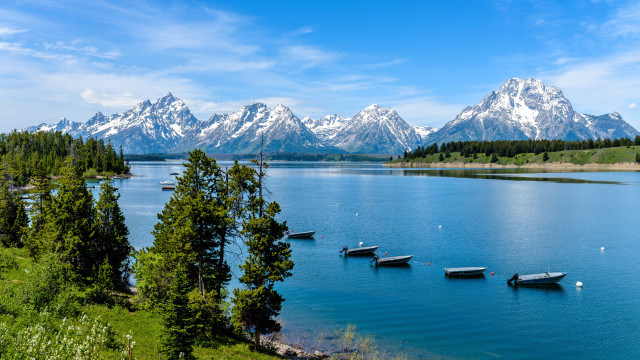




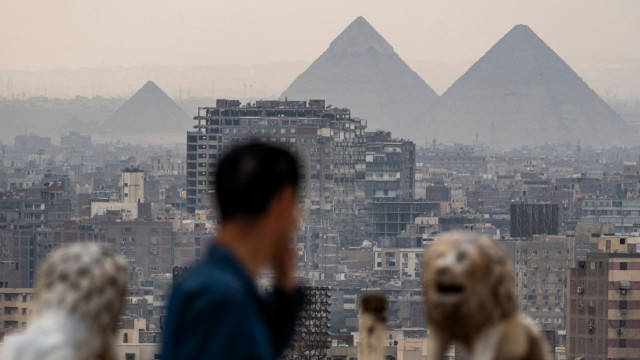
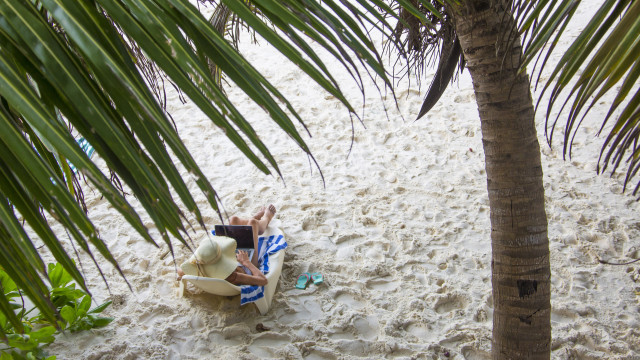
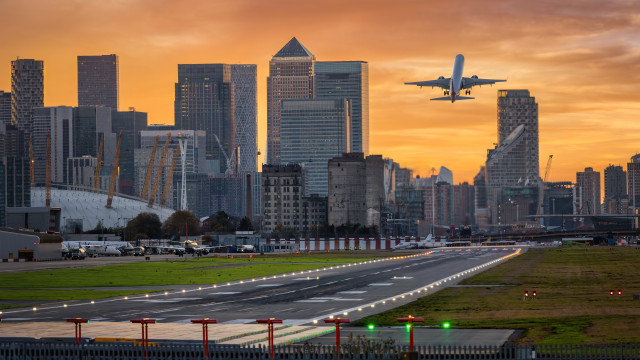
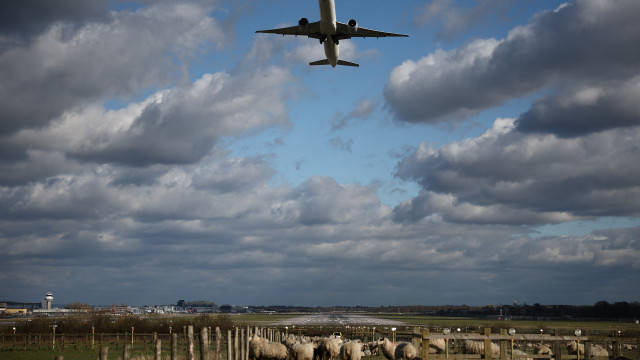


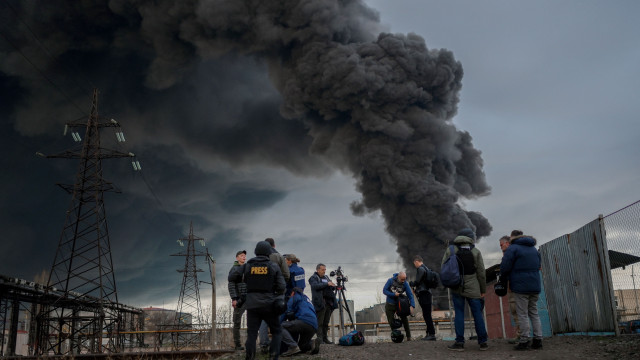

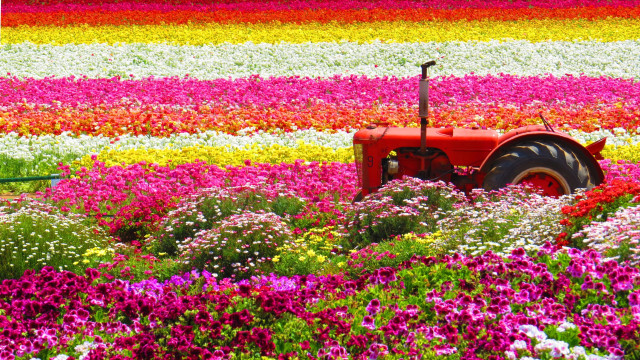


MOST READ
- Last Hour
- Last Day
- Last Week








